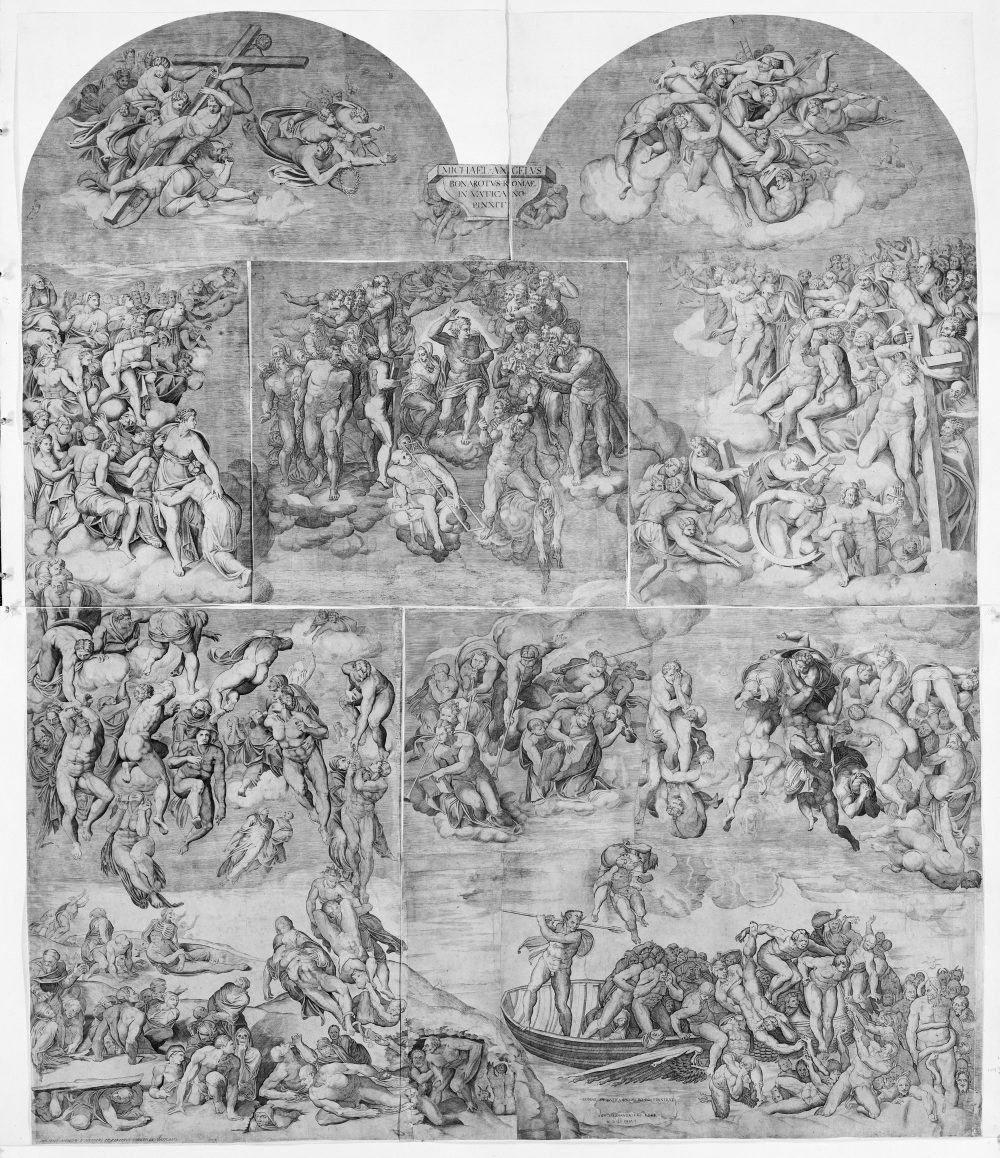
Metropolitan Museum of Art, New York, www.metmuseum.org
Having addressed the costuming of soldiers and popes, the characters now turn to the representation of women. They criticise the fact that female figures are depicted in thin garments that cling to their bodies. Furthermore, using Michelangelo’s “Last Judgement” as an example, they criticise, in addition to the thin robes, the fact that painters let them flutter. Although there is a certain freedom in the design of garments, the poetic licence should be used with caution in this case.
“M. Francesco replied: ‘[…] Another mistake I also notice among painters is that when they paint women they use garments to accentuate the relief of their breasts, buttocks, and thighs so that it actually looks as if the garments are glued on or, as is sometimes the case, as if a high wind were blowing and their garments, flattened against their bodies, bring all the relief; although not all parts at the same time. I have observed many times that, even if a woman is dressed in the thinnest conceivable cloth or other material – unless it be very fine gauze or gossamer, neither of which are in use for clothes – it is not possible for such marked relief to be created. They sometimes represent veils or hair in the same way, so that it seems that there is always a wind lifting them up and making them flutter. In certain places in his Last Judgement Michelangelo has done this, not realizing that on that day all winds and tempests will have ceased, and heaven and earth will have lost their powers. For this reason, I would recommend that everything be done with great care, so that it appears that the artist is imitating nature, not following subjective conceptions [capriccio]. I shall not say that such things should be strictly regulated that it is not permitted, from time to time, to do the contrary, provided that those things are what nature can do in the attractive way and provided that they can actually occur. License should always be used sparingly, because anyone wanting to extend it further than he ought will show himself to be lacking in awareness and care. An artist who knows his subject well may therefore make a charming mixture of what is and what isn’t exactly correct, whenever he wants, and for this he will always receive honorable praise. Yet no one should let himself be carried away by the false belief that painters can do anything, as if they were neither reasons nor rules to constrain them within do and appropriate limits; and disbelief has misled many into doing things that, rightly considered, lacked decorum and due proportion’.”
“Rispose M. Francesco: ‘[…] Un altro errore trovo ancora fra’ pittori, e questo è che, quando dipingono le donne, fanno fare a le vesti un rilievo tale al petto, a le natiche et a le polpe de le gambe, che par proprio che incollate vi sieno, o come suol fare a le volte che un grandissimo vento tira, che, stringendole loro addosso, gli fanno alquanto di rilievo; ma non tanto a un pezzo. Io ho molte volte a questo posto cura e, porti la donna veste di drappo quanto si voglia sottile o di che altro si sia, se non fusse di velo sottilissimo o di tela di ragno, non è possibile che faccia quello così spiccato rilievo, e quei due non sono per vestire in uso. Così anco fanno a le volte certi veli e capelli, che sempre par che tiri vento per alzarli e farli ventilare, il che in certi luoghi ha fatto nel suo Giudizio Michelagnolo, non avvertendo che in quel giorno saranno cessati i venti e le tempeste, et i cieli arranno perduta insieme con la terra la virtù loro. Per questo io loderei che tutte le cose si fessero con gran considerazione, acciò paresse che l’artefice imitasse la natura e non seguesse il capriccio. Non dirò già che queste cose s’abbino sì strettamente a regolare che a le volte non sia lecito fare il contrario; ma questo vorrebbe essere in quelle cose che la natura può vagamente fare, e necessariamente può cadere, e sempre usar la licenza parcamente, perché chi vuole stenderla più che non deve, si mostra poco accorto e diligente. L’artefice, dunque, che del soggetto sarà bene padrone, potrà, qualunque volta voglia gli ne viene, far vaga mescolanza de propri i et improprii, e di ciò n’arà sempre onorata lode. Nissuno si lasci però traportare a la vana opinione che ogni cosa sia lecita al pittore, come non vi fusse né ragione, né regola, che lo ristringa ne’ debiti e convenevol termini; e questa opinione ha fatto traviar molti a far cose che, rettamente considerate, si sono mancate del decoro e de la debita proporzione’.”
Gilio 2018, 155-156, n. 197-200, fig. 19-22



